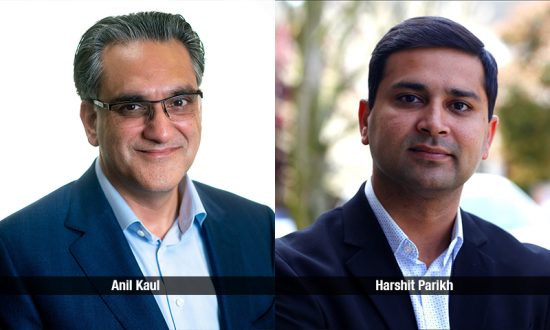Modern computing is fast, slick, and resourceful. It manages multiple operations at any given instant and the by-product of it is huge data, which ends up being stored on servers or hard drives. Some data is easily interpreted, yet a huge chunk of it remains dormant somewhere in data silos, which hasn’t been able to make its way up to be converted to information and used to enhance a certain operation.
For instance, huge data may be produced by security camera footage; yet except for detecting thefts and security issues; the rest of the footage goes into idle storage without much use. If security footage could have an in-built programme to count the number of people who pass by, it could give a clear number to organizations and stores about footfalls, which can be leveraged to boost sales. Thereby, a serious deficiency occurs between what data is being produced in an organization and what amount of it is being applied to construct insights and information. With this, data fabric can simply be understood as an architecture to simplify and access the stored data that can be converted into insights and perform self-service operations.
Why does data become idle and land in dead storage?
An organization usually knows the avenues where data is created and stored. However, most of them still haven’t figured out how to make the most of it. The primary aim of data fabric is to maximize data usage in an organization, and leverage its power to drive digital transformation. It is a known fact that many legacy systems are designed to silo the data being produced constantly. There must be a complete overhaul of the legacy systems, to modernise them into using the data in dead storage. Nevertheless, this exercise will not only be prohibitive but also time-consuming, expensive, and interruptive to daily performance. Data fabric is that architecture, which makes information ready, accessible and available to enhance operations and reduce manual labour.
Why do we need data fabric?
As per a recent IBM study, almost 80% of data that has been produced is dark data and unstructured, which means it is being produced with consistency; however, it doesn’t end up being used to improve functions. Further, another reputed survey claims that businesses whose foundation is built on and driven by data insights grow at an average of 30% annually. A data fabric architecture orchestrates an organization to use data that is stored in various locations, departments and even in multi-cloud environments to intensify operations and grow businesses.
It is all about making data easier to use, access, monitor and govern. Thus, data fabric includes integration, management and delivery, and processing of all which is handled or at least tracked by Artificial Intelligence (AI) and automation. This creates detailed analytics by reducing manual operations and the overall burden on IT infrastructures. After all, an organization with more data-backed analytics can increase business productivity and performance.
For instance, an organization that deals with printing will have huge heavy-duty printers. Every such printer produces data on its cartridge ink levels, which is normally ignored. If data fabric is implemented to use this information in an automated fashion, this can result in readable collective statistics on printing capacity and give a chance for preventive maintenance through advanced cartridge replacement measures, without leading to downtime. According to a report by Gartner, data fabric implementation reduces integration design and deployment by 30% and maintenance by about 70 per cent.
Concluding the case of data fabric
The new world is all about advanced data-gathering technology, and its second phase will focus on converting that exclusive data into a usable form to be more productive, automated, and serve the organization’s interests. This method of data fabric can leverage the existing storage and processing solution, without being an additional effort. In turn, this will help make room for new performance enhancement insights. With such practices in place, the manual need to collate, collect and process data will be discouraged.
Further, as per estimation data, scientists spend 45% of their time and resources on loading and cleaning data, and implementing a fabric will free up the workforce for other useful operations. While many organizations do not execute this method due to initial outlays, however, the overall benefit and result weigh upon any initial cost that comes with it. With operational efficiency going up, data scientists will have more interesting and valuable things to do with their innovative talents. The whole bet is to make the process smaller, faster and more efficient. After all, optimizing, sharing, processing and delivering data analytics becomes more useful and pertinent than having a chunk of raw data in dead storage.
About Dr. Anil Kaul, CEO, Absolutdata (an Infogain company)
Anil has over 22 years of experience in advanced analytics, market research, and management consulting. He is very passionate about analytics and leveraging technology to improve business decision-making. Prior to founding Absolutdata, Anil worked at McKinsey & Co. and Personify. He is also on the board of Edutopia, an innovative start-up in the language learning space. Anil holds a Ph.D. and a Master of Marketing degree, both from Cornell University.
About Harshit Parikh, Vice President, Global Practice lead at Infogain
A seasoned technology executive with nearly 20 years of experience leading large engineering teams, architecting complex technical solutions, and building and scaling geographically distributed teams to deliver them, Harshit knows how to deliver results in today’s changing world of business. A self-described digital native, Harshit has spent his career building the technical foundations that enable true digital transformation. He has advised clients on a diverse range of initiatives, including digital marketing, technology strategy and roadmap, enterprise solution architecture, CMS platforms, data platforms, commerce solutions, DevOps, and custom development, and led several global, technology-driven digital transformation initiatives for Fortune 500 clients.


